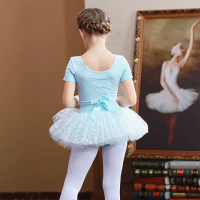Costumes for ballet performances. Among them, the reform of dancing shoes and skirts is more important.
①, Ballet shoes: At the beginning of the 18th century, M. Camargo invented the heelless shoes made of soft materials. In 1790, special padding was added to the toe of the heelless shoe to allow actors to dance with their toes.

②, Ballet skirt: In 1832, M. Taglioni began to use an off-the-shoulder dress designed by E. Lamy for her, called a romantic ballet skirt. This kind of dance skirt has a close-fitting upper body and a bell-shaped pleated skirt that goes to the knee. The skirt is made of several layers of white tulle and is matched with light red tights, which is convenient for actors to show dance such as big jumps and kicks. In 1880, the tutu was shortened and the thighs were exposed, called the tutu, and became the standard tutu for ballet. The skirt consists of 4 to 5 layers of silk crepe pleats, which are attached to a vest of the corresponding size.

Since the 20th century, modern ballets have mostly adopted artistic living costumes. Different clothes can indicate different identities of people. Actors in the drama are subject to the restrictions and domination of their costumes, and they perform various gestures and movements subconsciously. The same is true for dancers. For example, wearing a tutu bodice can make it appear that the upper body of a female ballerina is long. This feeling helps prevent the illusion that the female ballerina’s waist is weak, and the actress’ knees and feet are naturally taut due to her completely bare legs and the added charm of wearing a short skirt. If you wear a long drapey dress, the lines of the actress will naturally become more colorful, the waist can be twisted at will, and more knee bending movements can be used. Because of the perfect flow of the posture of the long skirt, it creates an elegant feeling. It can be seen that the costumes, intentionally or unintentionally, do affect the appearance and movements of the dancers.

